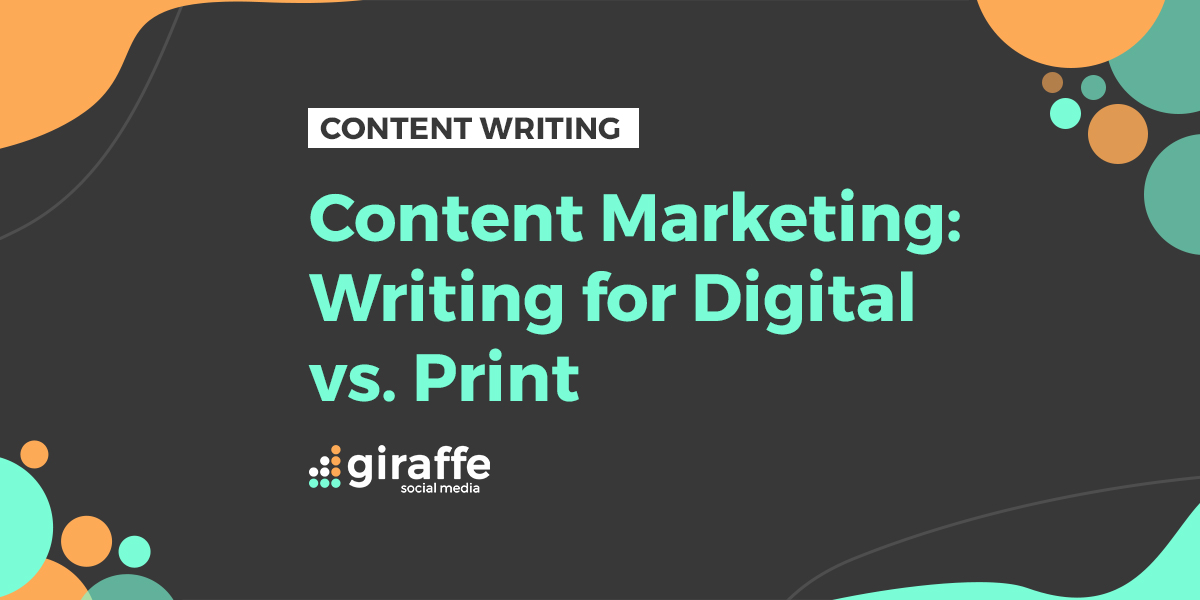The internet has revolutionised the way we read. Studies have shown that unlike print readers, online readers no longer read from left to right, but take in the page from the centre, scan the content – then go left to right.
When it comes to digital content most online readers will not even reach the bottom of the page, with only 75% absorbing the content. So how do you keep your readers for as long as possible?
Length
When it comes to print copy, such as magazines or newspapers, the reader has most likely invested effort and money in obtaining it. This creates more of a desire to actually finish. Many may pay for a subscription, whereas lots of people can just sign up for free online. Your digital article however is a simple click away, surrounded by a host of other articles much the same. Not only this, but where reading print can be an enjoyable pastime like a book, lengthy pages online are much more of a chore. Especially when reading from the web is 25% slower than reading from print.
This means you need to keep your information clear and concise; aim for a maximum of 1000 words, or follow the theory that digital writing should be half of what you would write for print – a much trickier task that requires more editing.
Format
Digital readers do not actually read web pages, they scan, picking out the useful headers and individual words. Learn to use this to your advantage and control the reader by introducing section breaks, clear topical and relevant headings, highlighted key words, sub headings and bullet points. Maintain this ease by sticking to one idea per paragraph and using topical first sentences. You could even include pull quotes, ready for people to share to social media.
The excellent and extensive Dr Nielsen study shows the difference this can make;
“A study of five different writing styles found that a sample Web site scored 58% higher in measured usability when it was written concisely, 47% higher when the text was scannable, and 27% higher when it was written in an objective style instead of the promotional style used in the control condition and many current Web pages. Combining these three changes into a single site that was concise, scannable, and objective at the same time resulted in 124% higher measured usability.”
Tone
Unlike the formality usually found in informative print writing, digital readers prefer informal text. Digital writing allows for a friendly tone with an injection of personality. High use of marketing or intellectual jargon is not only a huge turn-off with a lot of users (in Dr Nielsen’s study referring to it as “detestable”!), but also makes articles harder to read. Stick to simple writing and clear facts.
Content
Do not neglect excellent writing for the sake of SEO. One test subject in Dr Nielsen’s study said “Really good writing – you don’t see much of that on the Web.” With Dr Nielsen going on to state;
“We have collected many user comments about the content during this long series of studies. Indeed, we have come to realise that content is king in the user’s mind: When asked for feedback on a Web page, users will comment on the quality and relevance”
If your content is well thought out, well presented and well written you’ve provided your reader with three great reasons to stick around.
Links
Much like citations in print, hypertext provides an easy way to increase credibility, allowing the reader to validate your affirmations, whilst easily gaining more information on their chosen subject. This also gives you an excellent opportunity to refer your reader to other online articles you have written and encourage them to stay within your website or to engage further with your work.
Go forth with your short informative paragraphs, and conquer!
Edited by Olivia Newman – 02/01/2020.





